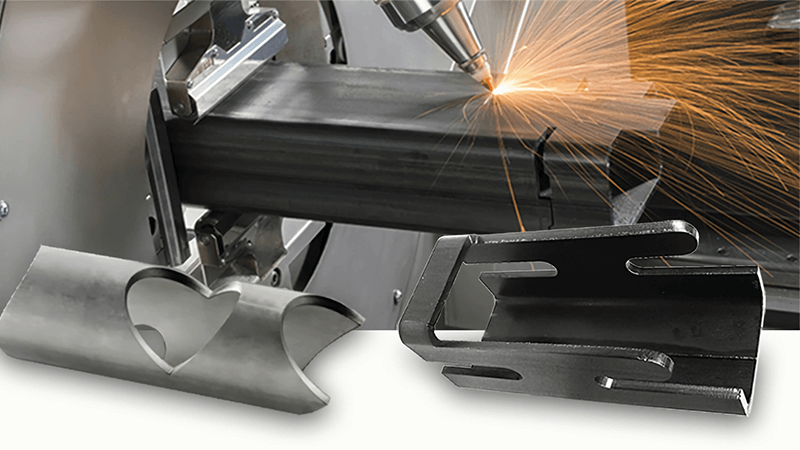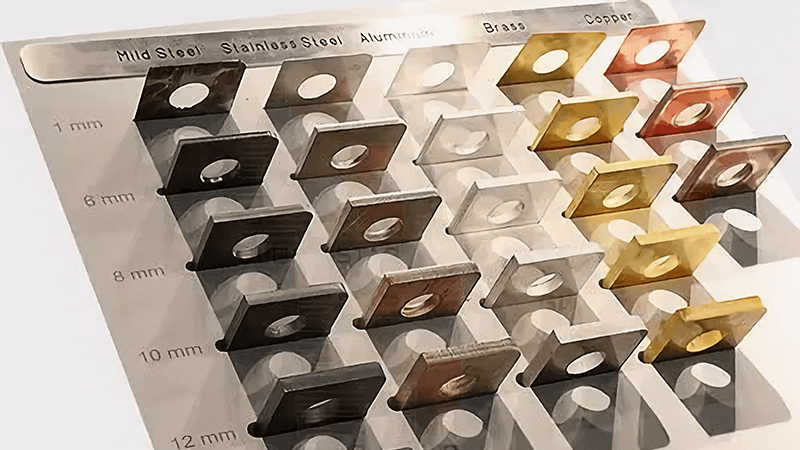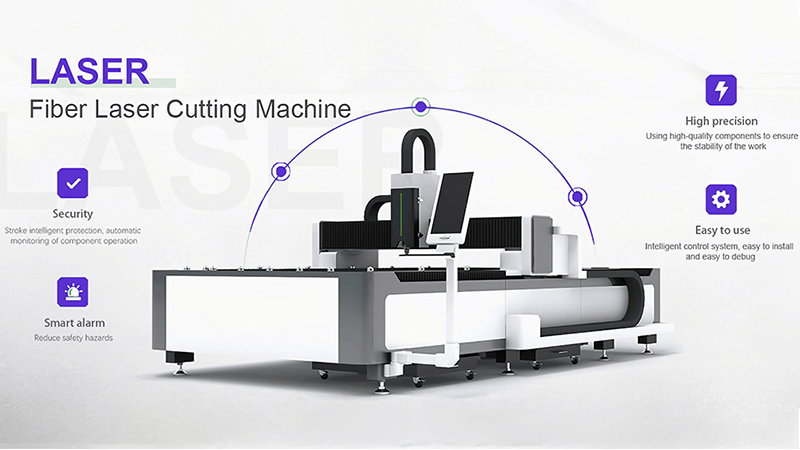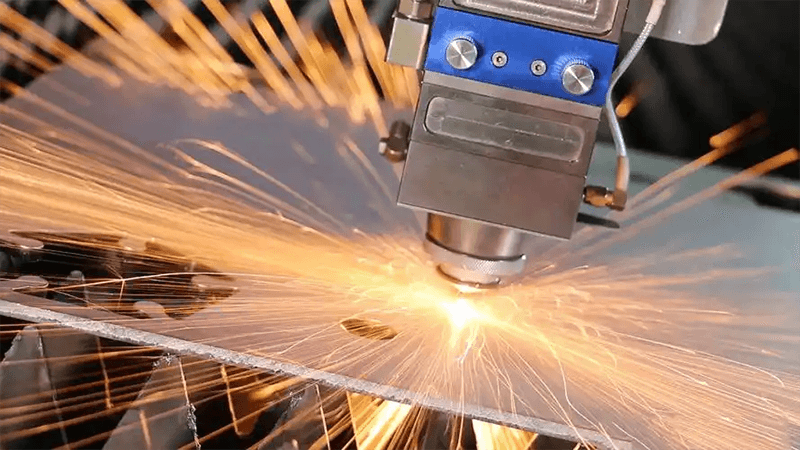When I first started in metal fabrication, I kept asking myself why some machines burned edges while others gave perfect cuts. That frustration made me search for the best laser type for metal cutting.
The best laser for cutting metal is the fiber laser. It offers superior absorption in steel, aluminum, copper, and other reflective materials. It also delivers faster speeds, higher precision, and lower energy costs compared to CO₂ or older lasers.
Choosing the right laser is not just about buying equipment. It is about deciding how efficient, precise, and profitable your operations will be. Let me explain what I have learned.

What is the best laser to cut metal?
Back in my early years, I tried CO₂ lasers, thinking they were strong enough. But I hit problems with reflective materials. The beams bounced back, caused messy edges, and wasted time. That taught me an important lesson.
The best laser to cut metal is the fiber laser. It absorbs light more effectively in reflective metals like aluminum, brass, and copper. This means cleaner edges, faster cuts, and fewer failures, making it the go-to choice for modern metal fabrication.
Why Fiber Beats CO₂
When I compare fiber and CO₂ machines side by side, the difference is clear.
Fiber lasers1 give sharper beam quality and consume less power. They also handle reflective surfaces without risk of back reflection damage.
Key Differences
| Feature | CO₂ Laser | Fiber Laser |
|---|---|---|
| Energy Efficiency2 | Lower | Much Higher |
| Material Absorption | Poor in reflective | Excellent in reflective |
| Maintenance Needs | High | Low |
| Cutting Speed | Moderate | Fast |
For me, the shift to fiber lasers changed everything. I stopped wasting time fixing edges and started focusing on scaling production. That is why I recommend fiber every time.

How powerful does a laser need to be to cut metal?
I remember working with a shop that used an underpowered machine. It struggled on 6mm steel and required multiple passes. The operators were frustrated, and so was I.
A fiber laser typically needs between 1kW and 12kW to cut metal, depending on thickness and type. Thin sheets cut easily with 1–2kW, while thicker steel may need 8–12kW for clean, single-pass cuts.
Power vs. Thickness
The relationship between power and thickness3 is simple. Higher power cuts thicker materials faster. Lower power may handle thin sheets but slows down when material gets heavy.
| Material & Thickness | Recommended Power |
|---|---|
| Aluminum 2mm | 1–2kW |
| Steel 6mm | 4–6kW |
| Stainless 10mm | 8–10kW |
| Thick Plate 20mm | 12kW+ |
When I helped a client upgrade from 2kW to 6kW, their productivity skyrocketed. Jobs that once needed two shifts finished in one. The operators had fewer errors, and the company saved thousands on energy.
Practical Insight
For procurement managers, it is better to invest in the right power upfront. It prevents production bottlenecks and prepares the shop for future growth. Fiber lasers4 give that flexibility.

What are the three types of laser cutters?
When I first trained new staff, they often asked why there were different machines for cutting. It can feel confusing, but the answer is simple once broken down.
The three main types of laser cutters are CO₂ lasers, fiber lasers, and crystal lasers (Nd:YAG or Nd:YVO). Each type has different strengths, but fiber lasers dominate today’s metal cutting industry because of efficiency and versatility.
Breaking Down the Types
- CO₂ Lasers – Good for non-metals, weaker on reflective metals.
- Crystal Lasers (Nd:YAG) – Strong but expensive and high maintenance.
- Fiber Lasers5 – The modern standard for metals, low cost to run, high performance.
| Type | Best Use Case | Weakness |
|---|---|---|
| CO₂ | Wood, plastic, acrylic | Poor on reflective metals |
| Nd:YAG/Crystal6 | Precision cutting, drilling | Costly, shorter lifespan |
| Fiber | Steel, aluminum, copper | Higher initial cost |
From my experience, CO₂ still has a place in non-metal industries. But for metal shops, nothing matches the fiber laser. That is why Kirin Laser focuses on fiber machines—we know where the industry is going.

How accurate is laser cutting metal?
I once visited a shop where tolerance was everything. They were building aerospace parts, and even a 0.1mm error meant scrap. They asked me if lasers were reliable enough. I smiled because I already knew the answer.
Fiber laser cutting machines can reach accuracies of ±0.05mm. This level of precision is ideal for industries like aerospace, automotive, and electronics, where tolerances are extremely strict.
Accuracy in Action
Fiber lasers use advanced beam delivery and CNC controls. This combination creates consistent, repeatable results. Edges stay smooth, and the cut width is narrow.
| Feature | Fiber Laser Accuracy7 |
|---|---|
| Positioning Precision8 | ±0.03mm |
| Repeatability | ±0.05mm |
| Edge Quality | High |
| Heat Distortion | Minimal |
When I swapped a CO₂ cutter for a fiber machine in one shop, scrap metal dropped by half. Operators reported less rework, and customers noticed cleaner finishes. That is the kind of result only fiber technology can provide.
Why Accuracy Matters
Accuracy is not just numbers. It is peace of mind. It is fewer rejected parts, happier clients, and stronger reputation in the market.

Conclusion
After 15+ years in fabrication, I am convinced: the fiber laser cutting machine 9 is the best tool for metal cutting. It brings unmatched efficiency, power flexibility, and accuracy. It reduces energy costs and solves the challenges of reflective metals. At Kirin Laser, we design and OEM fiber laser machines because we know this is the future of metal cutting. If precision and profit matter, then fiber laser is the only answer.
-
Explore this link to understand why Fiber lasers are more efficient and effective for various applications. ↩
-
Learn about Energy Efficiency in lasers to see how it impacts performance and cost savings. ↩
-
Understanding this relationship can help optimize cutting processes and improve efficiency in manufacturing. ↩
-
Exploring fiber lasers can reveal their advantages in flexibility and efficiency, crucial for modern production. ↩
-
Explore this link to understand why Fiber Lasers are the modern standard for metal cutting, offering high performance and cost efficiency. ↩
-
Learn about the maintenance needs of Nd:YAG/Crystal lasers to make informed decisions about their use in precision cutting. ↩
-
Discover how Fiber Laser Accuracy enhances manufacturing processes, leading to better quality and efficiency. ↩
-
Learn about the critical role of Positioning Precision in achieving high-quality laser cuts and reducing waste. ↩
-
Find the best laser cutting machine and laser cutting solutions from Kirin Laser, clicking this link to get all your needs. ↩





